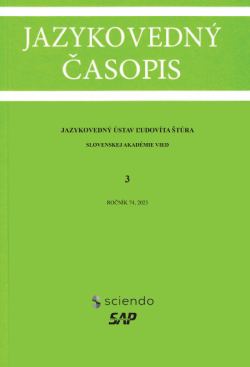From corpus data to constructional networks: Analyzing language with the Usage-based Construction Grammar framework
From corpus data to constructional networks: Analyzing language with the Usage-based Construction Grammar framework
Author(s): Jakob HorschSubject(s): Language and Literature Studies, Theoretical Linguistics, Applied Linguistics, Cognitive linguistics
Published by: SAV - Slovenská akadémia vied - Jazykovedný ústav Ľudovíta Štúra Slovenskej akadémie vied
Keywords: Usage-based Construction Grammar; Comparative Correlative; Slovak; meso-construction; mental network
Summary/Abstract: Construction Grammar (CxG) is an innovative approach to language that has become increasingly popular in the Anglosphere over the last 30 years. In CxG, the basic units of linguistic analysis are constructions: arbitrary and conventional form-meaning pairings, reminiscent of Saussure’s linguistic sign, but applied to levels of linguistic analysis beyond the lexicon. A large body of research has provided ample evidence in support of CxG. However, the theory remains unknown to many colleagues outside the Anglosphere. In this paper, I highlight a particularly interesting strand of CxG that is referred to as ‘usage-based’, an approach that assumes constructions are learned based on input frequency, that is, through repeated exposure to and use of a linguistic structure (hence usage-based). The main aim of this paper is thus to demonstrate how corpus data can be analyzed to find evidence for ‘entrenchment’ of linguistic structures and thus, the existence of constructions. I will illustrate this procedure by applying so-called covarying-collexeme analyses to data from the Slovak National Corpus (SNC) and the Slovak Web 2011 corpus from which I extracted 785 tokens of the so-called Comparative Correlative (CC) construction (e.g. Čím viac čítam, tým viac rozumiem).
Journal: Jazykovedný časopis
- Issue Year: 74/2023
- Issue No: 3
- Page Range: 701-740
- Page Count: 40
- Language: English

